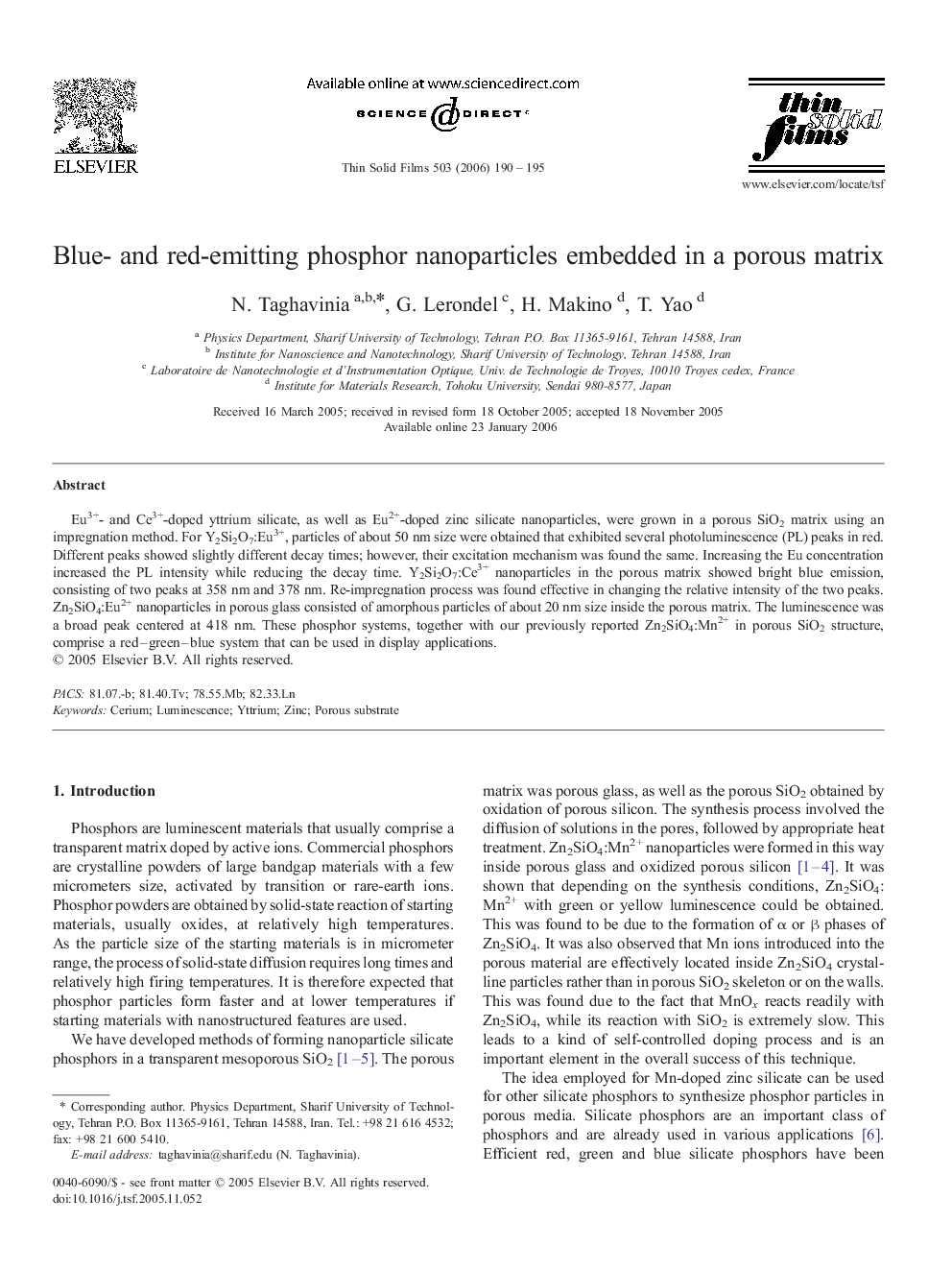| Article ID | Journal | Published Year | Pages | File Type |
|---|---|---|---|---|
| 1677074 | Thin Solid Films | 2006 | 6 Pages |
Eu3+- and Ce3+-doped yttrium silicate, as well as Eu2+-doped zinc silicate nanoparticles, were grown in a porous SiO2 matrix using an impregnation method. For Y2Si2O7:Eu3+, particles of about 50 nm size were obtained that exhibited several photoluminescence (PL) peaks in red. Different peaks showed slightly different decay times; however, their excitation mechanism was found the same. Increasing the Eu concentration increased the PL intensity while reducing the decay time. Y2Si2O7:Ce3+ nanoparticles in the porous matrix showed bright blue emission, consisting of two peaks at 358 nm and 378 nm. Re-impregnation process was found effective in changing the relative intensity of the two peaks. Zn2SiO4:Eu2+ nanoparticles in porous glass consisted of amorphous particles of about 20 nm size inside the porous matrix. The luminescence was a broad peak centered at 418 nm. These phosphor systems, together with our previously reported Zn2SiO4:Mn2+ in porous SiO2 structure, comprise a red–green–blue system that can be used in display applications.
